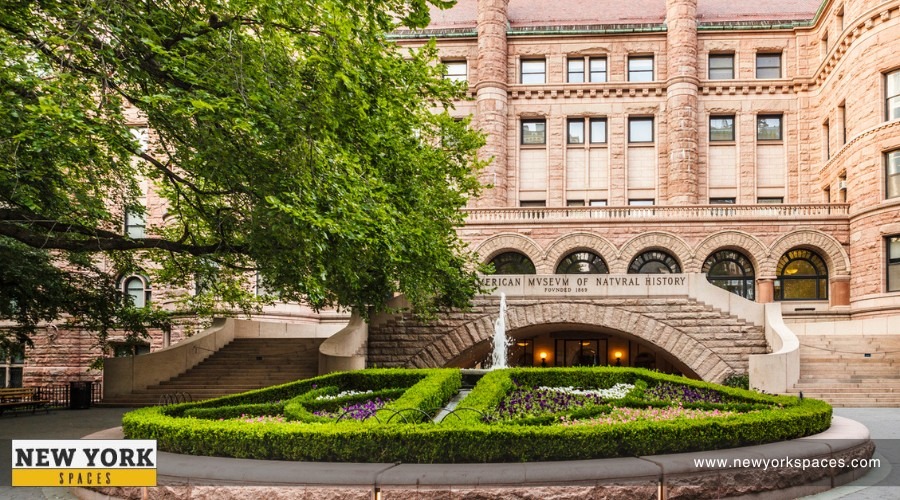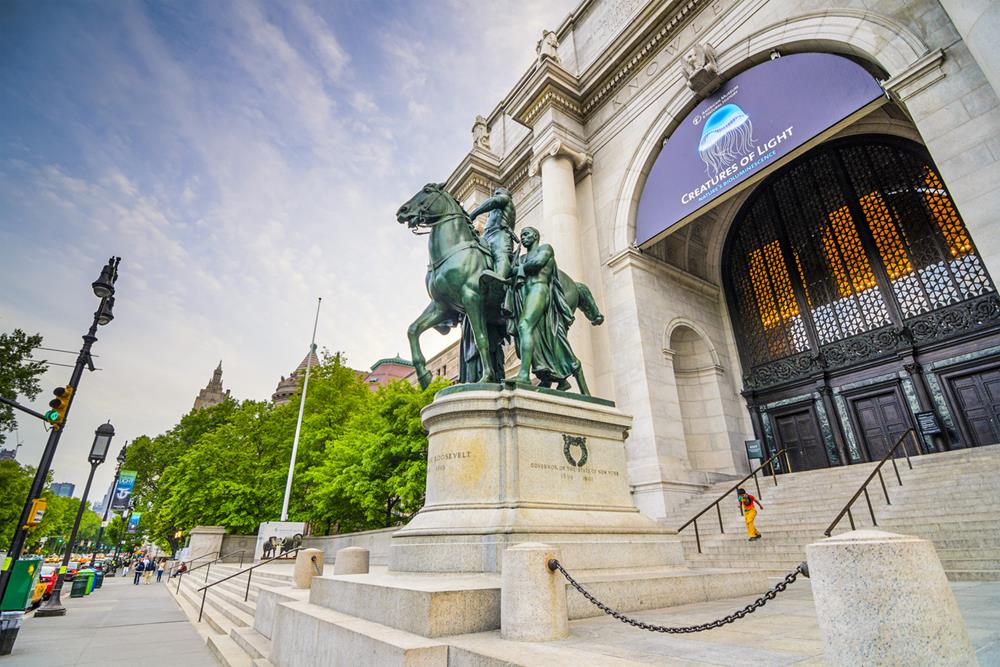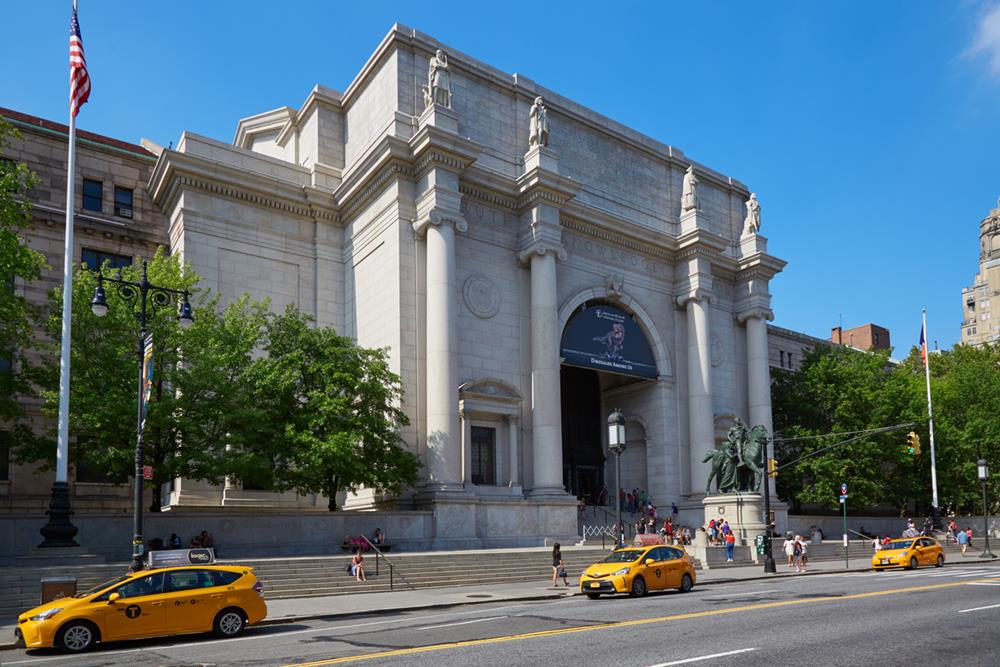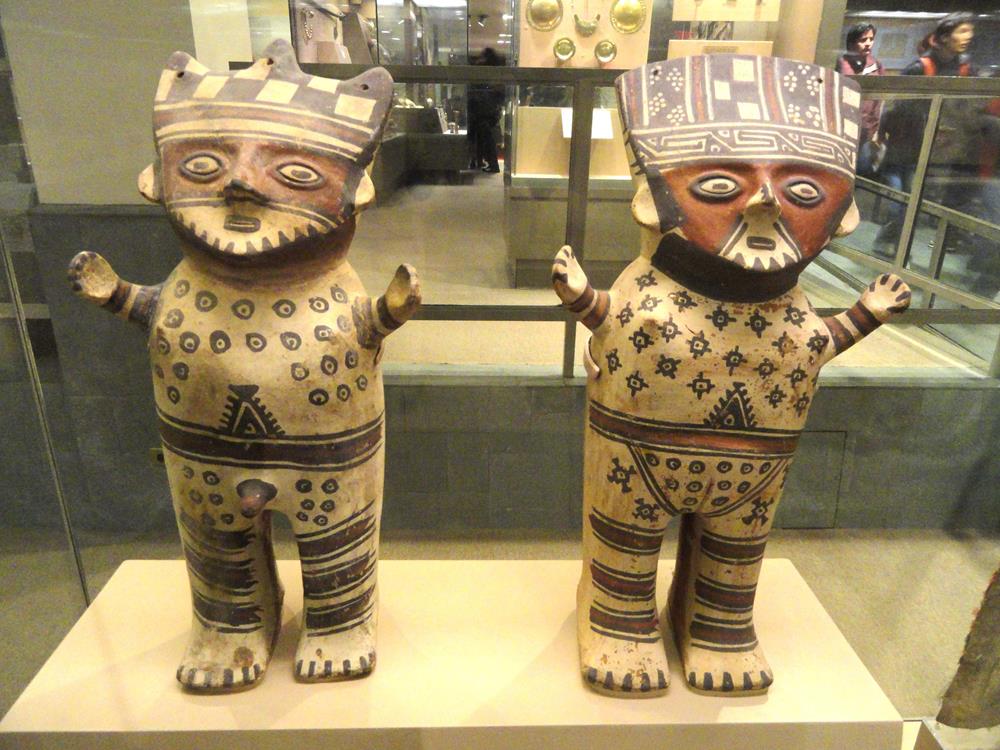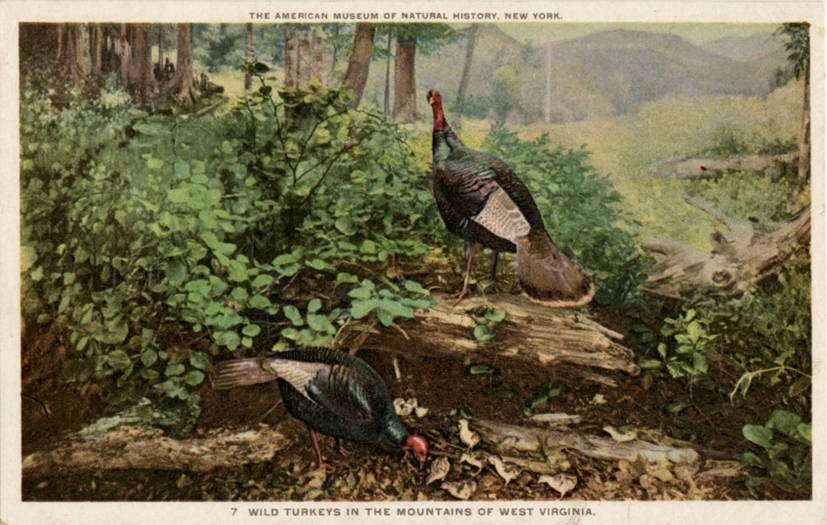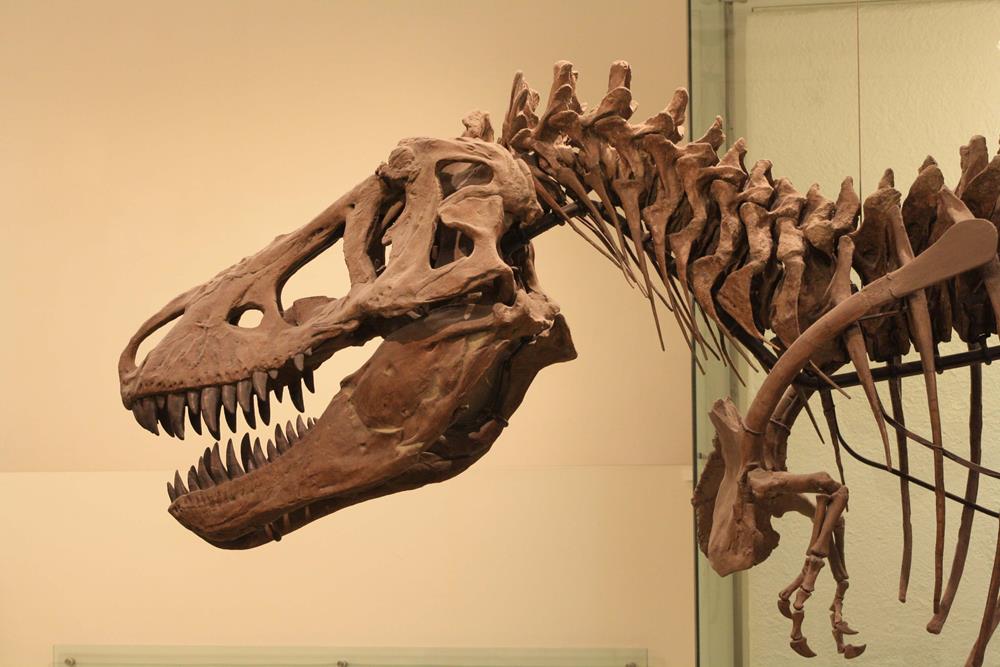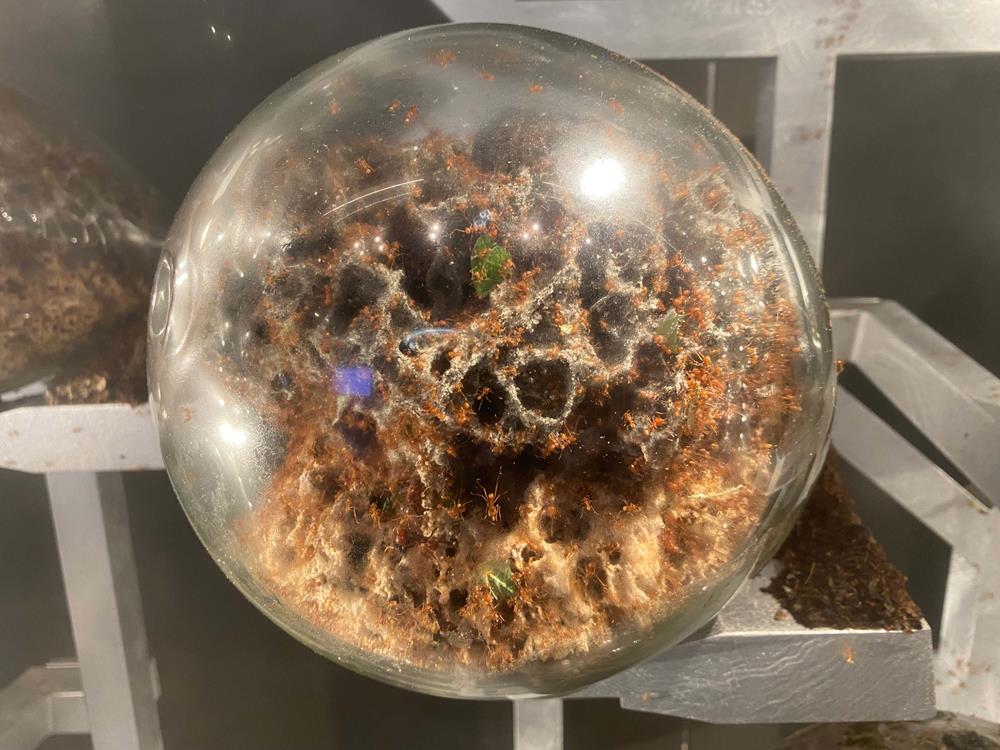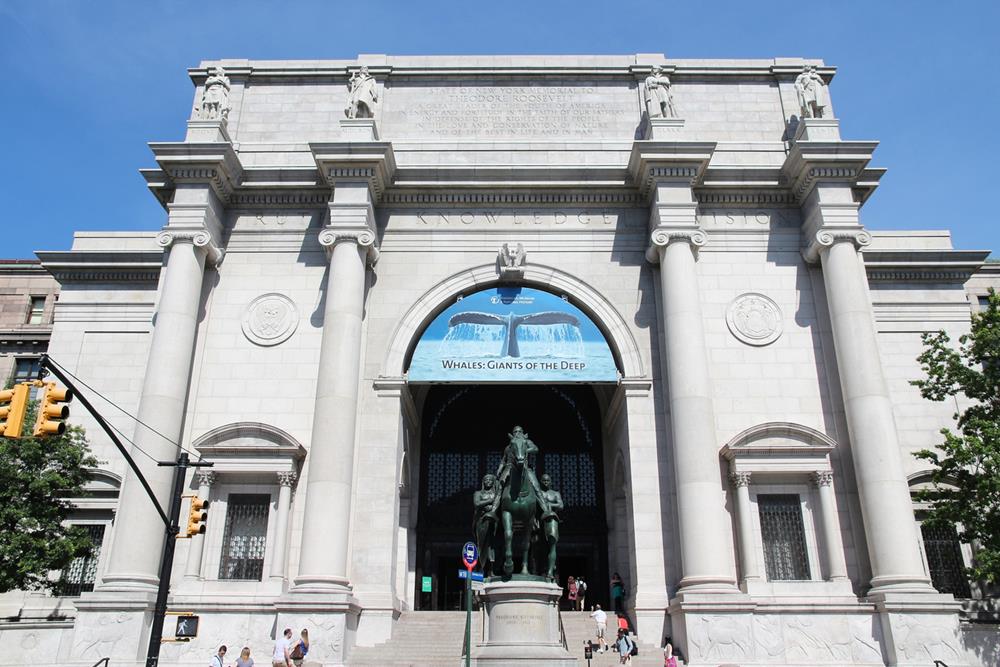As one of the largest and most celebrated museums globally, the American Museum of Natural History offers an awe-inspiring experience for visitors of all ages, combining scientific exploration with the excitement of discovery.
This vast museum complex, an iconic New York City landmark, spans across 20 interconnected buildings. It houses an impressive 45 permanent exhibition halls, a state-of-the-art planetarium, and a comprehensive library.
Home to approximately 35 million specimens, the AMNH’s collections are a staggering array of life and time, encompassing plants, animals, fungi, fossils, minerals, rocks, meteorites, as well as human remains and cultural artifacts. The collections also include specialized resources like frozen tissue samples, along with genomic and astrophysical data. Given its extensive collection, only a fraction is on display at any one time, inviting visitors to return time and again for new discoveries.
If you want to visit these amazing displays, here’s a guide that will help you on your next visit to the American Museum of Natural History.
Opening Hours
First things first: check the opening hours. The museum is generally open from 10 am to 5:30 pm daily. However, it’s closed on Thanksgiving and Christmas Day, so plan your visit accordingly.
Getting There
Embarking on your journey to the American Museum of Natural History is an experience in itself.
The complete address of the American Museum of Natural History is 200 Central Park West, New York. It’s easily accessible through various modes of transportation, including:
- Subway: Board the B or C trains and disembark at the 81st Street Station, also known as the Museum of Natural History station, which directly connects to the museum.
- Bus: For those who prefer to navigate the city’s streets, multiple bus routes serve the museum vicinity. Opt for the M79 crosstown bus, which conveniently stops right in front of the museum, or choose from other nearby routes such as the M7, M10, M11, or M86.
- Taxi or Ride-Share: For a more direct and personal route, hailing a classic New York yellow taxi or booking a ride-share service can be a convenient choice. Simply ask to be dropped off at the main entrance of the museum on Central Park West.
- Biking: In line with a greener approach to travel, the museum encourages visitors to bike. With convenient bike lanes leading up to its entrance and bike racks available for secure parking, cycling to the museum is both an eco-friendly and health-conscious option.
Entry and Exit Points
Exploring the American Museum of Natural History begins with its accessible and conveniently located entrances and exits, each offering its unique access point to the wonders inside.
Main Entrances and Exits
The primary entry for most visitors is the grand entrance on Central Park West at 79th Street. As you ascend the steps, you’re welcomed by the museum’s majestic architecture, a prelude to the treasures that await inside.
For those seeking an accessible option, entrances are also available at 81st Street, near the Rose Center for Earth and Space, and on Columbus Avenue at the Gilder Center at 79th Street. These entrances ensure everyone has a comfortable and convenient way to start their journey of discovery.
Member Priority Access
For members of the museum, there is a dedicated entrance at Central Park West and 79th Street, situated at ground level beneath the grand staircase. This entrance offers members and their guests a streamlined and priority access to the museum’s extensive exhibits.
School Group Entrance
School groups, particularly those arriving by subway, can enter from the 81st Street B/C subway station. This entrance is open Monday through Friday from 10 am to 2 pm, providing a direct and hassle-free entry for educational visits.
Accessibility and GPS Information
For those using Access-a-Ride Service or GPS navigation, two addresses can be used for specific entrance points:
- 56 West 81st Street for the entrance near the Rose Center on 81st Street. This location is ideal for accessing the museum’s captivating Rose Center for Earth and Space.
- 415 Columbus Avenue for the entrance to the Columbus Avenue Gilder Center. Please note that there is no driveway at this entrance, making it a convenient pedestrian access point.
Must-See Exhibits
The American Museum of Natural History boasts 45 exhibition halls. Each hall is a portal to different corners of our planet and beyond, inviting visitors to embark on a journey through time and space. Here are some of the must-see exhibits you shouldn’t miss!
Human Origins and Cultural Halls
The Hall of Human Origins
Situated on the south side of the first floor, this hall explores the fascinating journey of human evolution. It presents a comprehensive overview of our ancestors, from early hominids to modern Homo sapiens, through life-size reconstructions and fossil displays.
Cultural Halls
Spread across several floors, these halls offer a glimpse into the rich tapestry of human cultures. Notable ones include the Hall of African Peoples, the Hall of Asian Peoples, and the Hall of American Indians, each celebrating the art, traditions, and histories of various communities around the world.
Mammal Halls
North American Mammals and African Mammals Halls
These halls found on the first and second floors, respectively, display meticulously crafted dioramas. They recreate the natural habitats of various mammal species, providing an immersive look into their lives and environments.
Akeley Hall of African Mammals
Named after the famed explorer and taxidermist Carl Akeley, this grand hall, located on the first floor, is one of the museum’s most iconic spaces. It presents a spectacular collection of dioramas that depict some of Africa’s most impressive wildlife in their natural habitats.
Hall of Asian Mammals
This hall, also found on the first floor, offers a glimpse into the rich and varied wildlife of the vast Asian continent. The exhibits showcase a range of mammals from the jungles of India to the cold steppes of Siberia, featuring animals such as the majestic Bengal tiger, the elusive snow leopard, and the giant panda.
Birds, Reptiles and Amphibian Halls
The Hall of Birds of the World
On the second floor, this exhibit presents an array of avian species from across the globe. The stunningly realistic dioramas provide a window into the diverse habitats and behaviors of birds.
Sanford Hall of North American Birds
On the second floor, this hall is dedicated to the bird species of North America. The hall features beautifully detailed dioramas that depict birds in their natural habitats, offering insights into their behaviors, migration patterns, and the environmental challenges they face.
The Hall of Reptiles and Amphibians
This hall presents an extensive array of reptiles and amphibians in their meticulously recreated natural environments. From the sleek and slithering snakes to the diverse array of frogs, each diorama is crafted with attention to detail, offering a window into the lives of these fascinating creatures.
Whitney Memorial Hall of Oceanic Birds
Situated on the second floor, this exhibit focuses on the avian species that inhabit the islands and waters of the Pacific Ocean. The hall provides a unique perspective on these birds’ adaptations to oceanic life, their ecological roles, and the conservation efforts needed to protect these species.
Biodiversity and Environmental Halls
The Hall of Biodiversity
Located near the Roosevelt Rotunda, this exhibit showcases the incredible variety of life on Earth. It features a vivid, 2,500-square-foot diorama presenting a rainforest teeming with life, highlighting the urgent need for conservation.
The Milstein Hall of Ocean Life
A centerpiece of the museum, this hall is situated on the first floor. It’s famed for the awe-inspiring, life-sized model of a Blue Whale suspended from the ceiling. The exhibit provides a deep dive into oceanic life, from tiny plankton to mighty whales.
Hall of North American Forests
Situated on the first floor, this hall offers an immersive journey into the diverse forests of North America. Through a series of detailed dioramas, visitors are transported into various forest environments, from the dry pine forests of the Southwest to the lush rainforests of the Pacific Northwest.
Warburg Hall of New York State Environments
This localized exhibit, located on the second floor, provides a detailed look at the diverse ecosystems and wildlife found within New York State. It includes dioramas and displays that replicate various environments, from the Adirondack Mountains to the shores of Long Island, showcasing the state’s rich natural heritage.
The Hall of Meteorites, Minerals, and Gems
Located on the first floor, this hall is a treasure trove showcasing dazzling gemstones, rare minerals, and meteorites from outer space. It’s a sparkling journey into the geological wonders of our planet and beyond.
Earth and Planetary Science Halls
Arthur Ross Hall of Meteorites
Positioned on the first floor, this hall presents an awe-inspiring collection of meteorites, providing insights into the origins and compositions of these ancient celestial objects. The exhibit features rare specimens, interactive displays, and educational panels that delve into the science of meteorites, their impact on Earth, and what they reveal about the solar system.
Allison and Roberto Mignone Halls of Gems and Minerals
This dazzling exhibit, also located on the first floor, showcases a stunning array of over 5,000 specimens from around the world. Visitors can marvel at the beauty and diversity of gems and minerals, including world-famous diamonds, rare gems, and significant mineral specimens. The halls are designed to educate about the formation, properties, and uses of these natural treasures.
David S. and Ruth L. Gottesman Hall of Planet Earth
Situated on the ground floor, this hall offers a comprehensive exploration of Earth’s dynamic geology and its interconnected systems. It features interactive exhibits on plate tectonics, volcanism, and mineral formation, along with actual rock and mineral specimens that tell the story of our planet’s constantly changing nature.
Dinosaur Halls
On the fourth floor, these halls are where prehistoric giants roam. The Fossil Halls, including the Hall of Ornithischian Dinosaurs and the Hall of Saurischian Dinosaurs, showcase an extraordinary collection of fossil skeletons.
The Hall of Saurischian Dinosaurs, in particular, is located prominently in the museum. As you enter, you are greeted by the impressive skeletons and fossils of some of the most iconic dinosaurs that roamed the earth. These include the mighty Tyrannosaurus rex, known for its formidable stature and fearsome jaws, and the Apatosaurus, whose long neck and tail exemplify the grandeur of these ancient creatures.
Additional Attractions
Beyond its famed exhibits, the American Museum of Natural History is brimming with additional attractions that enrich your visit with unique experiences and hidden gems. These features not only complement the museum’s vast collection but also offer visitors varied opportunities to engage with the wonders of nature and science in interactive and immersive ways.
The Rose Center for Earth and Space
Housed in a modern glass cube adjacent to the main museum building, this center includes the Hayden Planetarium. It offers an incredible journey through the cosmos, exploring galaxies, stars, and the very fabric of our universe.
Richard Gilder Center for Science, Education, and Innovation
This groundbreaking addition to the museum is a hub of learning and research. Located centrally within the complex, the Gilder Center focuses on enhancing public understanding of science through interactive exhibits, educational programs, and state-of-the-art facilities. It serves as a bridge between the scientific community and the public, offering a dynamic space where visitors can engage with science in new and exciting ways.
The Hayden Planetarium
Part of the Rose Center for Earth and Space, the Hayden Planetarium is a gateway to the stars. Here, you can journey through the universe in the immersive space show, which combines cutting-edge technology with the latest in astrophysical research.
The Theodore Roosevelt Memorial
As a tribute to the conservation-minded president, this area includes the Theodore Roosevelt Rotunda and the Theodore Roosevelt Memorial Hall. It serves as the museum’s main entrance and features a grand statue of Roosevelt, along with exhibits about his life and contributions to environmental stewardship.
The Discovery Room
Tailored for families and young visitors, this interactive space offers a hands-on introduction to the wonders of natural science. Kids can explore a variety of activities, such as unearthing dinosaur fossils, observing live animals, and engaging with scientific tools.
The Library
For those who seek deeper knowledge, the museum’s library is a treasure trove. With extensive collections in biodiversity, anthropology, and natural history, it’s a vital resource for researchers and a fascinating stop for avid learners.
The Museum Shop
A visit isn’t complete without a stop at the museum shop. From educational toys and books to unique souvenirs and apparel, the shop offers a wide array of items that reflect the museum’s themes and exhibits.
Public Programs and Events
The museum hosts a variety of public programs and events throughout the year, including workshops, lectures, and special exhibitions. These events offer unique opportunities to engage with experts, explore specific topics in-depth, and experience the museum in new ways.
The Butterfly Conservatory
This seasonal exhibit, located in the Orange Zone, transforms a space into a tropical butterfly haven. Visitors can walk among free-flying butterflies, learn about their life cycles, and perhaps even have a butterfly land on them.
The Outdoor Gardens and Wildlife Centers
Surrounding the museum are various outdoor spaces that provide a serene environment for relaxation and learning about local flora and fauna. These gardens are not only beautiful but also serve as living extensions of the museum’s commitment to understanding and conserving the natural world.
Special Exhibitions and IMAX Films
Regularly, the museum hosts special exhibitions and IMAX film screenings that delve into specific scientific or cultural themes. These limited-time offerings are an excellent way to enhance your visit with fresh and unique perspectives.
Dining Options
A day of exploration at the American Museum of Natural History is bound to build an appetite, and fortunately, the museum and its surrounding area offer a plethora of dining options to satisfy any craving. From quick bites to more leisurely meals, the choices are as varied and interesting as the museum’s exhibits.
The Museum Food Court
Conveniently located within the museum, this bustling spot offers a wide range of dining options suitable for all tastes and preferences. Whether you’re craving a hearty meal, a quick sandwich, or a refreshing beverage, the Food Court has it all. Its family-friendly atmosphere makes it an ideal stop for visitors of all ages.
The Café on One
For a quieter, more relaxed setting, The Café on One is a perfect choice. Situated on the first floor, it provides a serene escape from the hustle and bustle of the museum. Enjoy a light snack, a gourmet coffee, or a sweet treat while you recharge. It’s a great spot to plan your next move in the museum or simply take a breather.
The Powerhouse
A unique dining experience within the museum, The Powerhouse offers a sit-down option with a menu that caters to a more refined palate. With an emphasis on sustainable and locally sourced ingredients, it’s an excellent choice for those seeking a more upscale dining experience.
Nearby Eateries
Stepping out into the Upper West Side, you’ll find yourself amidst a smorgasbord of culinary delights. Just a short walk from the museum, these eateries offer a taste of New York City’s vibrant food scene.
- Shake Shack: A modern-day “roadside” burger stand known for its delicious burgers, chicken, hot dogs, shakes, frozen custard, beer, wine, and more. It’s a casual and popular choice for a quick and satisfying meal.
- Zabar’s: An iconic New York deli and gourmet food store offering a vast selection of cheeses, smoked fish, breads, and other delicacies. Perfect for picking up a picnic to enjoy in nearby Central Park.
- Carmine’s Italian Restaurant: A legendary family-style restaurant offering the most traditional Italian dishes. The portions are generous, and the atmosphere is vibrant, making it a great choice for groups.
- Nice Matin: Just a stroll away, this French bistro provides a chic dining experience with a menu that perfectly blends classic and modern French cuisine.
- The Mermaid Inn: For seafood lovers, this cozy spot offers a delightful array of fresh seafood dishes in a relaxed and welcoming environment.
Amenities
The American Museum of Natural History not only offers a world-class exploration experience but also ensures visitor comfort and convenience with its thoughtful amenities. Whether you’re looking for the perfect memento from your visit, need to stow your belongings, or simply require a moment to relax, the museum’s facilities are designed to enhance your visit.
Gift Shops
The museum houses several gift shops, each offering a unique selection of merchandise. The main Museum Shop, located near the Central Park West entrance, is a treasure trove of souvenirs, from educational toys and books to apparel and jewelry inspired by the museum’s exhibits.
The Dino Store in the Hall of Saurischian Dinosaurs is perfect for dinosaur enthusiasts, offering a wide range of dinosaur-themed items.
For those interested in space and astronomy, the Space Shop at the Rose Center for Earth and Space is a must-visit. These shops not only provide a chance to take a piece of the museum home but also offer educational gifts that can continue the learning experience.
Coat Check
To ensure a comfortable visit, the museum provides a coat check service where visitors can store coats, umbrellas, and larger bags. The coat check is located in the Theodore Roosevelt Memorial Hall. This service is particularly useful during the colder months or for those carrying extra items. A small fee may apply for some items, and it’s wise to check the museum’s policy on what can be checked in.
Rest Areas
Throughout the museum, you’ll find numerous rest areas equipped with benches and seating. These spots are perfect for taking a break, reflecting on the exhibits you’ve seen, or planning the next step of your journey through the museum. The Hall of Ocean Life, with its iconic Blue Whale model, is a popular spot for a rest break, offering a serene backdrop. Additionally, the Rose Center for Earth and Space features seating with a view of the stunning Hayden Sphere, providing a peaceful space to relax and absorb the cosmic ambiance.
Information Desks
Strategically placed throughout the museum, information desks are staffed with knowledgeable personnel ready to assist with directions, exhibit information, and general inquiries. They can also provide maps and brochures to help navigate the museum’s vast offerings.
Restrooms and Family Care Facilities
Clean and well-maintained restrooms are available throughout the museum. Family care facilities, including nursing rooms and changing tables, are also accessible, ensuring a family-friendly experience.
Wi-Fi Access
Complimentary Wi-Fi is available throughout the museum, allowing visitors to access digital guides, the museum’s app, and other online resources to enhance their visit.
Eating Areas
For those bringing their own food, designated eating areas are available. These spots offer a place to enjoy a snack or a meal away from the exhibit halls. Remember, eating and drinking are not allowed in the exhibit areas to protect the collections.
Tips for Visitors
A visit to the American Museum of Natural History is an enriching experience filled with learning and discovery. To make the most of your visit, here are some essential tips that can enhance your exploration of this world-renowned institution:
- Best Times to Visit: While the museum is a popular destination throughout the year, weekday mornings typically see fewer crowds. This time allows for a more relaxed and intimate experience with the exhibits. If you prefer a quieter visit, aim to arrive early, right when the museum opens. Additionally, the museum tends to be less crowded during the winter months, excluding holidays.
- Tickets and Membership: Purchasing tickets in advance online can save you time waiting in lines, especially during peak tourist seasons. Tickets are available for purchase on the museum’s website. For those planning multiple visits or extended explorations, consider a museum membership. Members often enjoy benefits such as unlimited free admission, discounts at the museum shops and cafes, and exclusive access to special exhibitions and events.
- Accessibility: The museum is committed to accessibility for all visitors. Wheelchairs are available on a first-come, first-served basis, free of charge. Elevators and ramps are located throughout the museum, ensuring that all exhibitions are accessible. For visitors with hearing impairments, assistive listening devices are available, and many of the museum’s films include open or closed captioning. Additionally, service animals are welcome.
- Photography: Personal photography is encouraged, as it’s a great way to remember your visit. However, flash photography, tripods, and selfie sticks are not permitted in order to protect the exhibits and ensure the safety and enjoyment of all visitors. In some special exhibitions, photography might be restricted, so it’s always good to check the signs at the entrance.
- Plan Your Visit: The museum is vast, and it’s challenging to see everything in one day. Prioritize the exhibits and sections that interest you the most. The museum’s website and mobile app offer maps and additional information to help plan your visit.
- Stay Connected: Free Wi-Fi is available throughout the museum, allowing visitors to access the museum’s mobile app. The app includes an interactive map, audio guide, and information about the exhibits, enhancing your self-guided tour.
- Food and Beverages: Outside food and beverages are not permitted in the museum galleries. If you bring your own snacks or lunch, plan to enjoy them in designated dining areas or outside the museum.
- Rest and Recharge: There are numerous benches and seating areas throughout the museum, so take advantage of these to rest and reflect on the exhibits you’ve seen. This is particularly important if you’re visiting with young children or seniors.
- Stay Informed About Events and Temporary Exhibits: The museum frequently hosts special events, temporary exhibits, and educational programs. Check the museum’s website or inquire at the information desk for any ongoing or upcoming special activities that might be of interest.
- Dress Comfortably and Appropriately: Wear comfortable shoes as you will be walking a lot. Dress in layers as temperatures can vary from one exhibit to another.
Nearby Attractions
After visiting the American Museum of Natural History, make the most of your trip to New York City by visiting the nearby attractions! Whether you’re looking to unwind in nature, continue to learn, immerse in the arts, or delve into America’s history, there’s no shortage of nearby destinations to explore.
Central Park
Just a stone’s throw away from the museum, Central Park offers a lush, verdant escape from the urban environment. Spanning over 800 acres, the park is an ideal spot for relaxation, leisurely strolls, or a picturesque picnic.
Key attractions within the park include the Central Park Zoo, the Bethesda Terrace and Fountain, and the scenic Bow Bridge. The park also hosts a variety of seasonal activities, such as open-air theatre performances, concerts, and guided nature walks, making it a perfect complement to a day spent at the museum.
Children’s Museum of Manhattan
Located a short distance away at 212 West 83rd Street, this interactive museum is a wonderland for young minds. It features five floors of exhibits and activities designed to stimulate learning and discovery in children. From hands-on art workshops to immersive environments that explore world cultures, science, and a range of other themes, it’s a space where children can learn while having fun.
The New York Historical Society
Situated at 170 Central Park West, this museum offers an insightful look into New York and American history. It is New York’s oldest museum and features an extensive collection of historical artifacts, artwork, and photographs. The society regularly hosts thought-provoking exhibitions, educational programs, and a series of interactive displays, including the DiMenna Children’s History Museum, which offers a historical perspective tailored to a younger audience.
The Frick Collection
A bit further down Fifth Avenue, The Frick Collection is housed in the former residence of industrialist Henry Clay Frick. This museum and art reference library boasts an impressive collection of Old Master paintings, European sculptures, and decorative arts. The serene interior courtyard and the peaceful gardens provide a tranquil setting for reflection and appreciation of art.
Lincoln Center for the Performing Arts
A short trip from the museum, Lincoln Center is a hub of cultural activity. Home to the Metropolitan Opera, the New York City Ballet, and the New York Philharmonic, among other resident arts organizations, it offers a variety of performances ranging from classical music to contemporary dance.
Cathedral of Saint John the Divine
As one of the largest cathedrals in the world, this stunning architectural marvel is not only a place of worship but also a center of art, culture, and community events. It hosts concerts, art exhibitions, and workshops throughout the year and offers guided tours that explore the history and architecture of this iconic structure.
Conclusion
The American Museum of Natural History is a gateway to understanding the natural world and our place within it. With its rich collections and interactive exhibits, it promises an enriching experience for all. We hope this guide inspires you to explore this magnificent institution and uncover the wonders it holds.

